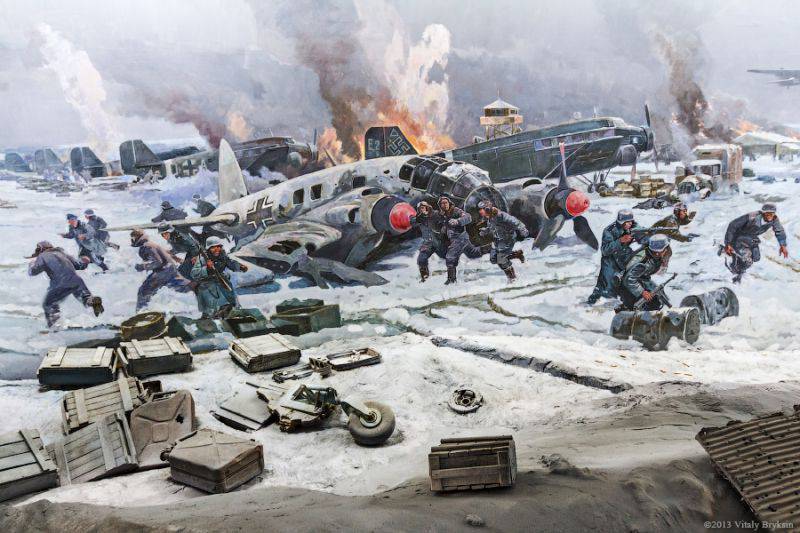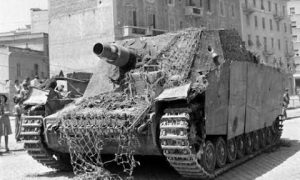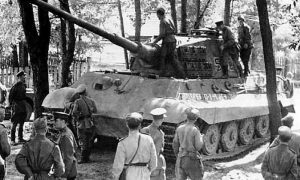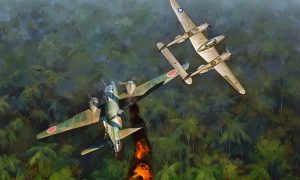Tatsinsky Tank Raid of General Vasily Badanov – Stalingrad 1942
The Tatsinsky raid by Major General Vasily Badanov became one of the most glorious pages of World War 2. In December 1942, when the situation at Stalingrad remained very tense, the troops of his 24th tanks Corps broke through the front and reached the German rear airfield, which was located in the village of Tatsinskaya and was used to supply Paulus’s army surrounded by Soviet troops. For this feat, on December 26, 1942, the tank corps was renamed the 2nd Guards Corps, it was given the name “Tatsinsky”, and General Vasily Badanov himself was awarded the Order of Suvorov.
The operation was led by a man who devoted a long time of his life to a purely peaceful profession Vasily Mikhailovich Badanov (1895-1971) was a teacher. In his youth, he successfully graduated from a teacher’s seminary, but the First World War changed a lot. In 1916, he graduated from the Chuguev military school and by the time of the revolution he was already in command of a company, being a lieutenant. After returning home from the front, he again took up teaching work, returning to the army only in 1919, now into the ranks of the Red Army. In general, after the end of the Civil War, his military career took off. In January 1940, he was appointed director of the Poltava Military Automobile Technical School, and on March 11, 1941, just before the war, he assumed command of the 55th tank Division from the 25th Mechanized Corps.
The Catholic Christmas of 1942 was approaching, and off the banks of the Volga the culmination of a grandiose battle was ripening, which in the future would mark a radical turning point in the war. Manstein’s troops tried with all their might to break through to Stalingrad, relieving the army of Paulus surrounded in the city. For this, Operation Wintergewitter (“Winter Storm”, literal translation “Winter Thunderstorm”) was organized, which became a tactical surprise for the Soviet command. The Soviet command was expecting a release strike by German troops, but not from the south, but from the west, where the distance between the main forces of the German armies and the encircled grouping was minimal.
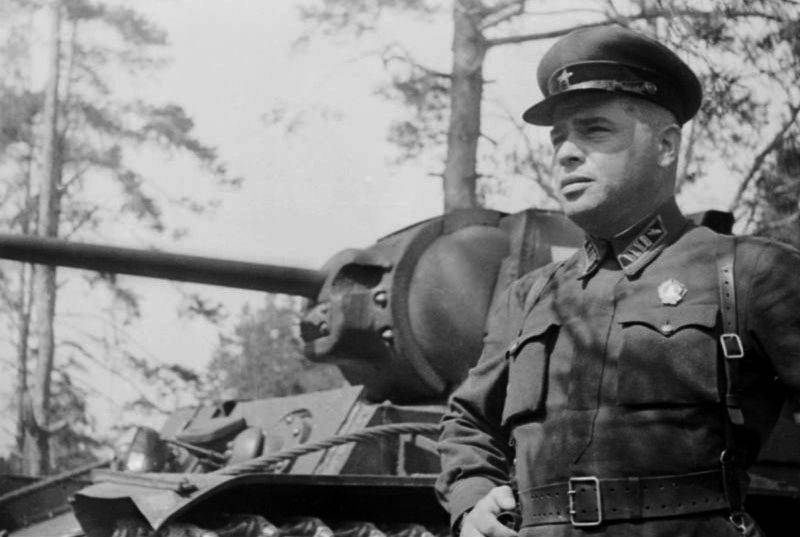 The German offensive began on December 12, 1942, and developed very successfully at the first stage. The 302nd Rifle Division of the Red Army, which took the main blow of the Germans, was quickly dispersed and a gap arose in the front of the 51st Army. This fact provided the German unblocking units with a rapid advance. By the end of the day, the German 6th Panzer Division, which formed the backbone of the advancing group and had recently been transferred from France, reached the southern bank of the Aksai River. At the same time, the 23rd German Panzer Division, transferred from the Caucasus, reached the Aksai River in the area north of Nebykov. On December 13, crossing Aksai, the 6th Panzer Division was able to reach the village of Verkhne-Kumsky, where it was stopped by counterattacks by Soviet units for 5 days, which ultimately decided in many ways the fate of the German counterstrike. On December 20 parts of the German grouping reached the Myshkov River (35-40 km were left to the encircled Paulus grouping), they met there units of the approaching 2nd Guards Army of the Stalingrad Front. By this time, the Germans had already lost up to 230 tanks and up to 60% of their motorized infantry in battle.
The German offensive began on December 12, 1942, and developed very successfully at the first stage. The 302nd Rifle Division of the Red Army, which took the main blow of the Germans, was quickly dispersed and a gap arose in the front of the 51st Army. This fact provided the German unblocking units with a rapid advance. By the end of the day, the German 6th Panzer Division, which formed the backbone of the advancing group and had recently been transferred from France, reached the southern bank of the Aksai River. At the same time, the 23rd German Panzer Division, transferred from the Caucasus, reached the Aksai River in the area north of Nebykov. On December 13, crossing Aksai, the 6th Panzer Division was able to reach the village of Verkhne-Kumsky, where it was stopped by counterattacks by Soviet units for 5 days, which ultimately decided in many ways the fate of the German counterstrike. On December 20 parts of the German grouping reached the Myshkov River (35-40 km were left to the encircled Paulus grouping), they met there units of the approaching 2nd Guards Army of the Stalingrad Front. By this time, the Germans had already lost up to 230 tanks and up to 60% of their motorized infantry in battle.
The encircled group of German troops near Stalingrad was supplied by air and was not going to surrender in December 1942. The supply of the encircled units was carried out from a large airfield located in the village of Tatsinskaya. It was at this moment, when Manstein’s units continued their attempts to unblock Paulus’s troops, Vasily Badanov received his main combat mission from the army commander General Vatutin. Badanov’s tank corps was supposed to conduct something like a grand reconnaissance in force. The operation was largely calculated on heroism without regard to circumstances and losses. Having broken through the positions of the 8th Italian Army, the 24th Panzer Corps had to go to the rear of the Germans, solving three tasks at once: to try to cut off the operational group of German troops from Rostov-on-Don, to divert the German troops onto itself,who were aimed at Stalingrad and destroy the airfield at the Tatsinskaya station, which was used to supply the encircled 6th Army of Paulus.
Major General Vasily Badanov took over the 24th Panzer Corps in April 1942. After heavy fighting near Kharkov, where the corps lost almost 2/3 of its strength, it was withdrawn for reorganization. Until December 1942, the corps restored its combat readiness, in fact, being in the reserve of the Supreme Command Headquarters. By the time of the Tatsinsky raid, the corps consisted of three tank brigades: 4th Guards Tank, 54th Tank, 130th Tank, as well as 24th Motorized Rifle Brigade, 658th Anti-Aircraft Artillery Regiment and 413th Separate Guards Mortar division. By the time of the offensive in the 24th Tank Corps, manning was 90% with tanks, 70% with personnel, and 50% with vehicles. In total, it included up to 91 tanks (T-34 and T-70).
The first stage of the 24th Tanks Corps’ offensive was successful. On December 19, being put into battle from the Osetrovsky bridgehead in the zone of action of the 4th Guards Rifle Corps, on the front sector defended by Italian units, Badanov’s tank corps practically did not meet significant resistance from their side. The blocking units, which were involved in the depths of the Italian front, in the drainage basin of the Chir River, soon fled under the pressure of attacks by Soviet troops, throwing guns and vehicles onto the battlefield. Many Italian officers tore down their insignia and tried to hide. Badanov’s tankers crushed the Italians. According to the recollections of the tankers themselves, they met combat vehicles that literally darkened with blood. Despite,that the Germans learned about the advance of the Russian tank corps, they did not have time to “intercept” it. For five days of a rapid march, Badanov’s tankers were able to overcome 240 kilometers.
At the same time, during the actions of the Soviet troops, the 8th Italian Army was actually defeated. More than 15 thousand of their soldiers were captured. The remnants of the Italian divisions withdrew, abandoning equipment and warehouses with food and ammunition. Many headquarters were removed from the scene, losing contact with the units, all fled. At the same time, the 8th Italian Army, which by the fall of 1942 numbered about 250 thousand soldiers and officers, lost half of its composition in killed, wounded and captured.
By eight o’clock in the evening on December 21, 24th Panzer Corps was able to reach the settlement of Bolshakovka. After that, Vasily Badanov ordered the commanders of the 130th tank brigade, Lieutenant Colonel S.K.Nesterov and the commander of the 54th tank brigade, Colonel V.M. by the end of December 21, master the given settlement. At the same time, the 4th Guards Tank Brigade, commanded by Colonel G. I. Kopylov, was tasked with liberating Ilyinka from the enemy by the morning of December 22. Having overcome the water barrier, units of the 130th Tank Brigade crushed the enemy outposts and broke into the northeastern outskirts of Bolshinka and started a battle there. Lacking information about the forces of the advancing Soviet troops,the enemy threw his reserves against the 130th Tank Brigade. At this time, the 54th Tank Brigade struck at the enemy from the northwest. On December 21, at 23:00, the village was captured.
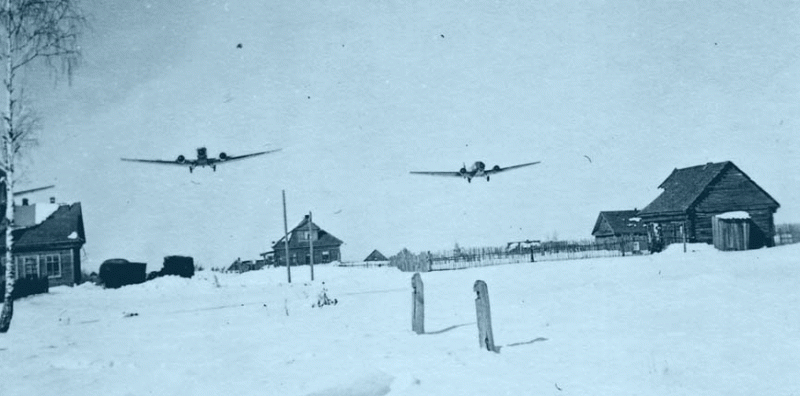
The corps began to fight heavy battles only on the approaches to Tatsinskaya. So it was with difficulty that Ilyinka was captured, which, oddly enough, was very stubbornly defended by half a battalion of the Germans and up to one and a half hundred Cossacks who joined the Wehrmacht. At the same time, already in front of Tatsinskaya, less than half of the fuel reserves remained in the fuel tanks. and the corps supply base was located at a distance of 250 kilometers in Kalach. At the same time, the corps vehicles for the supply of fuel and ammunition were clearly not enough, but the corps successfully advanced in such conditions.
The second stage of the offensive operation is directly the assault on the village of Tatsinskaya. It began on the morning of December 24 at 7:30 am after the strike of Katyusha rocket launchers from the 413th Guards Mortar Division. After that, Soviet tanks rushed to the German rear airfield, from which General Martin Fiebig, the commander of the 8th corps of the Luftwaffe, barely managed to get away. The blow was struck simultaneously from three sides, the signal for the general attack was the Katyusha artillery raid and the 555 signal transmitted by radio communication.
Here’s what the German pilot Kurt Schreit later recalled about how it happened: “Morning December 24, 1942. A faint dawn broke in the east, illuminating the still gray horizon. At this moment, Soviet tanks, firing on the move, suddenly burst into the village of Tatsinskaya and the airfield. The planes flashed like torches. Flames of fires raged everywhere, shells exploded, and stored ammunition flew into the air. Trucks darted across the takeoff field, and between them screaming people rushed about. Who will give the order where to go to the pilots? Take off and leave in the direction of Novocherkassk – that’s all that General Fibig managed to order. Shaped madness begins. Planes leave and take off from all sides on the runway. All this is happening under enemy fire and in the light of the flaring fires.The sky stretched out like a crimson bell over thousands of dying soldiers, whose faces expressed madness. Here is one Ju-52 transport plane, not having time to rise into the air, crashes into a Soviet tank and explodes with a terrible roar. Already in the air “Heinkel” collide with “Junkers” and are scattered into small fragments together with their passengers. The roar of aircraft engines and tank engines mingles with the roar of explosions, cannon fire and machine gun bursts to form a monstrous symphony of music. All this together creates in the eyes of the viewer of those events a complete picture of the open-ended hell. “Already in the air “Heinkel” collide with “Junkers” and are scattered into small fragments together with their passengers. The roar of aircraft engines and tank engines mingles with the roar of explosions, cannon fire and machine gun bursts to form a monstrous symphony of music. All this together creates in the eyes of the viewer of those events a complete picture of the open-ended hell. “Already in the air “Heinkel” collide with “Junkers” and are scattered into small fragments together with their passengers. The roar of aircraft engines and tank engines mingles with the roar of explosions, cannon fire and machine gun bursts to form a monstrous symphony of music. All this together creates in the eyes of the viewer of those events a complete picture of the open-ended hell. ”
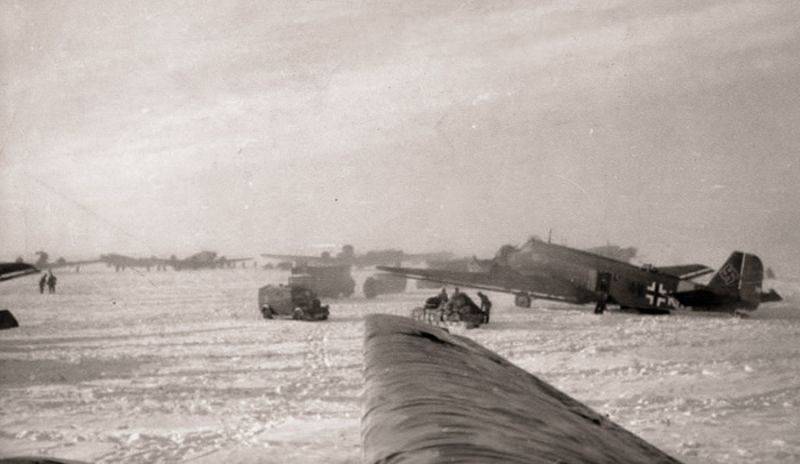 Less than 12 hours later, Major General Vasily Badanov reported by radio that the task had been completed. The village of Tatsinskaya and the eney airfield were captured. The Germans lost up to 40 aircraft (large command “registrations”, which brought the number of destroyed and captured aircraft to almost 400, appeared much later). But the most important result was that the encircled group of Paulus lost its air supply base. However, the Germans did not sit idly by. On the night of December 23, Manstein, realizing that he would not break through to Paulus, would redeploy the 11th Panzer Division and the 6th Panzer Division, against Badanov’s corps. They are moving on a forced march in order to stop the advance of the Soviet tank corps. German tank divisions managed to clamp Badanov’s corps with pincers,on which the artillery is now continuously working and the German aviation . Already on December 24, forward detachments from the 6th German Panzer Division, with the support of assault gun subunits, captured the areas located north of Tatsinskaya.
Less than 12 hours later, Major General Vasily Badanov reported by radio that the task had been completed. The village of Tatsinskaya and the eney airfield were captured. The Germans lost up to 40 aircraft (large command “registrations”, which brought the number of destroyed and captured aircraft to almost 400, appeared much later). But the most important result was that the encircled group of Paulus lost its air supply base. However, the Germans did not sit idly by. On the night of December 23, Manstein, realizing that he would not break through to Paulus, would redeploy the 11th Panzer Division and the 6th Panzer Division, against Badanov’s corps. They are moving on a forced march in order to stop the advance of the Soviet tank corps. German tank divisions managed to clamp Badanov’s corps with pincers,on which the artillery is now continuously working and the German aviation . Already on December 24, forward detachments from the 6th German Panzer Division, with the support of assault gun subunits, captured the areas located north of Tatsinskaya.
By December 25, 58 tanks remained in the Badanov corps: 39 T-34 medium tanks and 19 T-70 light tanks, while ammunition and fuel and lubricants were running out. On the morning of December 26, 6 trucks with ammunition, as well as 5 petrol tankers, were able to break through to the location of the corps with the support of 5 T-34 tanks. The corps will not be able to receive any more supplies. Around the same time, Vasily Badanov learns that his corps was awarded the rank of a guard.
Vatutin tried to help Badanov by sending two motorized corps and two rifle divisions to the rescue, but General Routh, who commanded the German 6th Panzer Division, managed to repel all the attacks of the Soviet troops. Parts of Major General Badanov were surrounded, resisting desperately. Many soldiers of the corps fought literally to the last bullet. The silos and granaries burning in the village of Tatsinskaya illuminated the horrific picture of the fighting – twisted anti-tank guns, broken supply convoys, aircraft wreckage, burning tanks, people frostbitten to death.
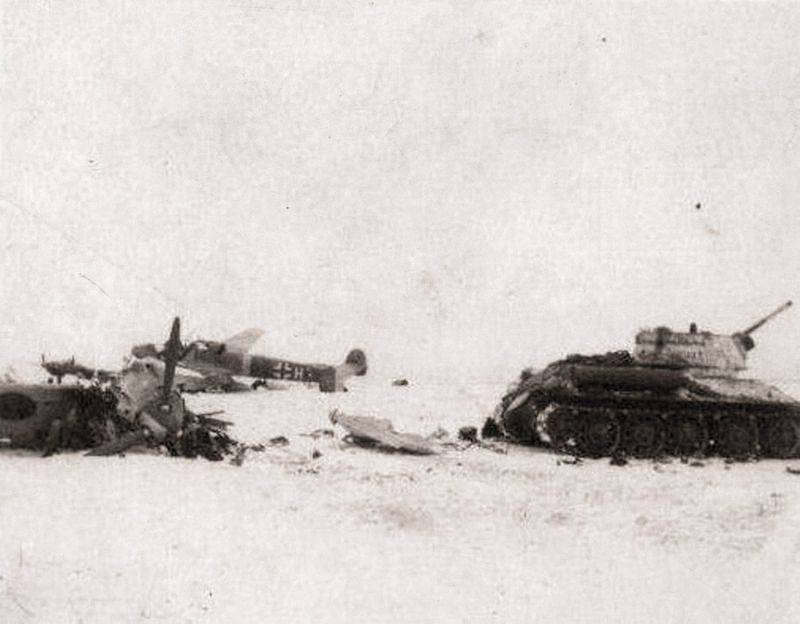
On December 27, Vasily Badanov reports to Vatutin that the situation is very serious. The shells are running out, in the corps there are serious losses in personnel, it is no longer possible to hold Tatsinskaya. Badanov asks for permission to break through the corps from the encirclement. But Vatutin orders to keep the village and “only if the worst happens”, to try to break out of the encirclement. Realistically assessing his capabilities and the situation, Major General Badanov personally decides on a breakthrough. On a frosty night on December 28, the remaining forces of the 24th Panzer Corps managed to find a weak spot in the German defense and broke through from the encirclement to the Ilyinka area, crossed the Bystraya River and united with the Soviet units. At the same time, only 927 people survived, barely a tenth of the corps, which began the offensive on December 19, 1942. Larger and fresher forces could not break through to their rescue, but they were able to get out of the encirclement, having accomplished a real feat.
The Supreme Soviet and the Soviet High Command noted the heroism of the 24th tank Corps units, their valiant resistance to the end and the unparalleled tank raid deep in the German rear, which became a wonderful example for the rest of the Red Army. During its raid, the 24th tanks Corps reported on the destruction of 11292 enemy soldiers and officers, 4769 people were taken prisoner, 84 tanks were knocked out, 106 guns were destroyed. Up to 10 enemy batteries were destroyed in the Tatsinskaya area alone. After the Tatsino raid, a joke appeared among the troops that the best means of fighting German aviation were tank tracks.
Vasily Badanov himself eventually rose to the rank of lieutenant general. Two years later, during the Lvov-Sandomierz offensive operation, he was seriously wounded and concussed. After recovering in August 1944, Lieutenant General Vasily Badanov was appointed head of the department of military educational institutions of the Main Directorate for the formation and combat training of armored and mechanized troops of the Soviet Army. This is how the combat general returned to teaching.


